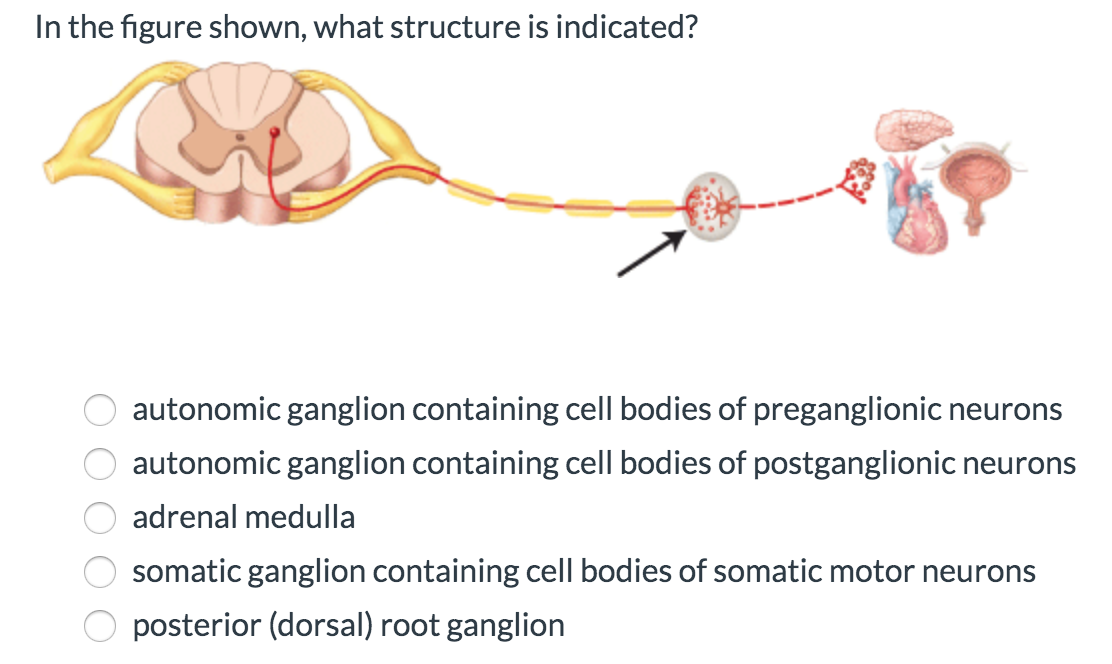

The 31 right and left spinal nerve pairs in humans form from afferent sensory dorsal axons (the dorsal root) and motor ventral efferent axons (the ventral root). The white rami communicantes nerve also serves as a conduit for discogenic afferents, conveying intrinsic spinal pain signals to the DRG. Also, DRGs are intimately connected with the sympathetic chain via rami communicantes nerves. Thus, a single PSN can span dramatically large anatomy. These fibers-typically large-diameter central axons of Aβ primary sensory neurons-comprise the dorsal columns and are most commonly recruited in spinal cord stimulation (SCS). In turn, other DRG fibers traverse the length of the dorsal columns to reach the dorsal column nuclei in the brainstem. It shows considerable axonal arborizations into the spinal cord, terminating in synapses at ipsilateral or contralateral wide dynamic range neurons, inhibitory interneuron networks, and other targets in the dorsal horn. The central part of the axon extends into the central nervous system (CNS). The peripheral portion of the axon extends to receptor endings in the periphery and is responsible for afferent signaling.

ĭRG neurons are pseudounipolar a single axon projects from the cell body and bifurcates at the T-junction. They are physically separated from other PSN somata. Satellite glial cells are a specialized form of glia in the DRG that envelop each PSN to create an independent functional unit. In addition, DRGs have a large population of glial cells each DRG has approximately eightfold more glia than neurons.

They also carry nociceptive input to the DRG but contribute to the more diffuse and more profound secondary pain after an injury. Unmyelinated C fibers have a smaller diameter and slower conduction velocity. Myelinated Aδ fibers have a relatively high velocity to carry acute nociceptive details (temperature, mechanical, and chemical-induced) to the DRG. Aβ, Aδ, and C fibers carry peripheral sensation information to their respective soma in the DRG. The axons of these neurons are bundled into roots/nerves that contain a mix of fibers with varied excitability, including low-threshold mechanosensory fibers, higher-threshold Aβ nociceptors, and Aδ fibers. They can be categorized based on histologic staining of neurofilament density as "large-light" neurons (generally A-neurons, relaying non-noxious information) or "small-dark" neurons (generally C-neurons, relaying painful signals). Somata diameters range from 20 to 150 μm.

The DRG (about the size of a tiny peanut) is an enlargement of the dorsal root that houses somata (cell bodies) of primary sensory neurons (PSNs) up to 15,000 neurons are present in each DRG at limb-innervating segmental levels. The DRG, located within the dural sheath, is a bilateral structure found at every vertebral level and housed within fixed bony vertebral structures (neuroforamen) as it spans the transition from the spinal cord and vertebral column to the periphery. The DRG participates in sensory transduction and modulation, including pain transmission. A proper understanding of the significance and functioning of the DRG can help improve the diagnosis and treatment of clinical outcomes. Additionally, it is noted that DRG is an active participant in peripheral processes, including PAF injury, inflammation, and neuropathic pain development. Over the last decade, the DRG is now recognized as a viable option for neuromodulation therapy electrical stimulation of primary sensory neuron somata is also considered a viable option in treating chronic pain. The DRG has been the focus of numerous interventions, including dorsal rhizotomy or gangliectomy, dorsal root entry zone (DREZ) lesioning (an adjacent related neural target), conventional radiofrequency denervation, pulsed radiofrequency, and steroid injection. The earliest technique of anesthetic infiltration of DRG was reported in 1949. The role of DRG in chronic pain has been well established. They carry sensory messages from various receptors (i.e., pain and temperature) at the periphery towards the central nervous system for a response. Anatomically, a dorsal root ganglion (DRG) emerges from the dorsal root of the spinal nerves. Dorsal nerve roots carry sensory neural signals to the central nervous system (CNS) from the peripheral nervous system (PNS).


 0 kommentar(er)
0 kommentar(er)
